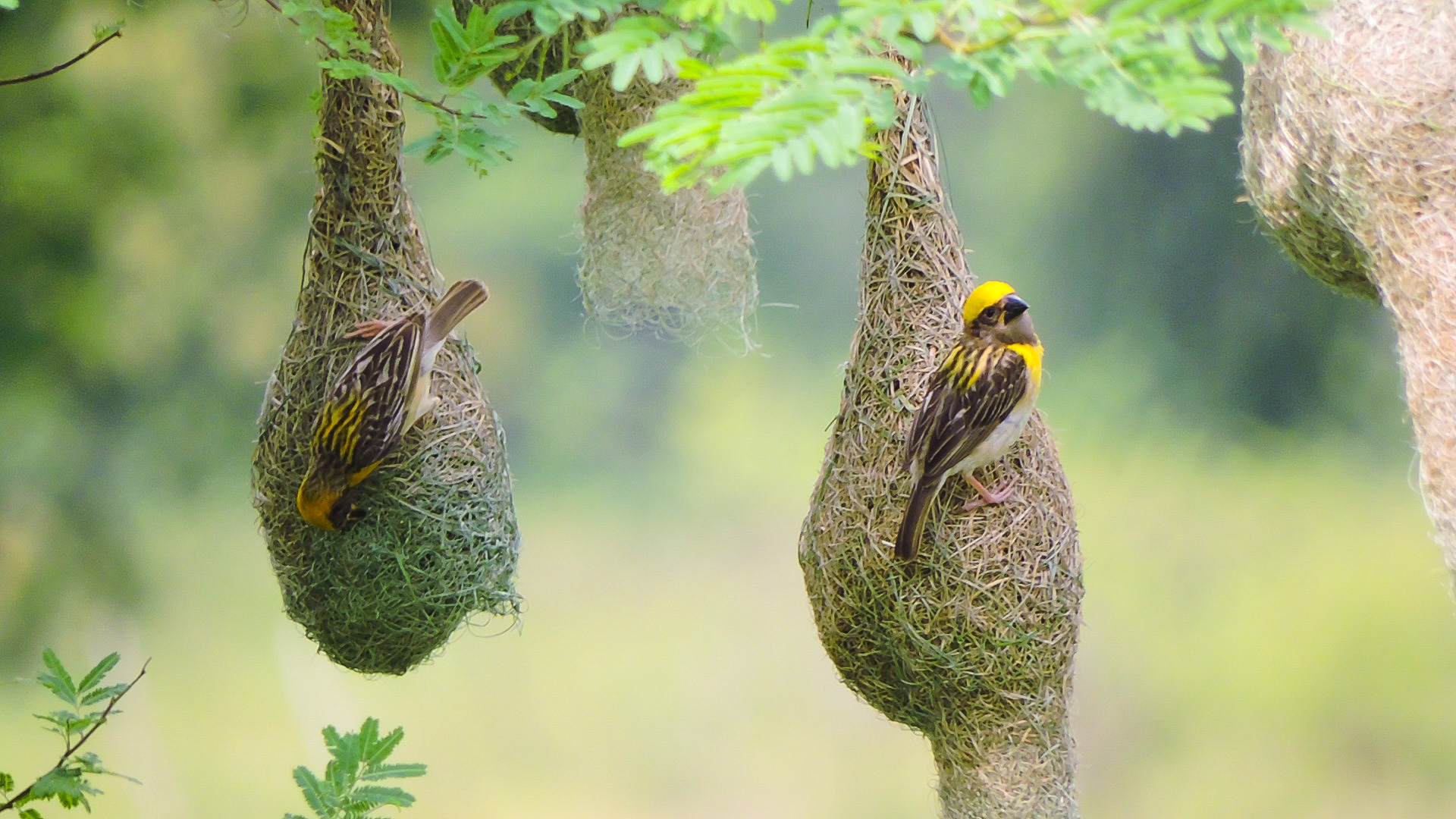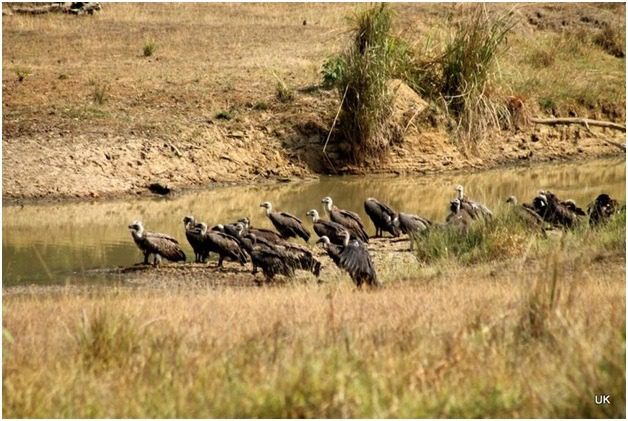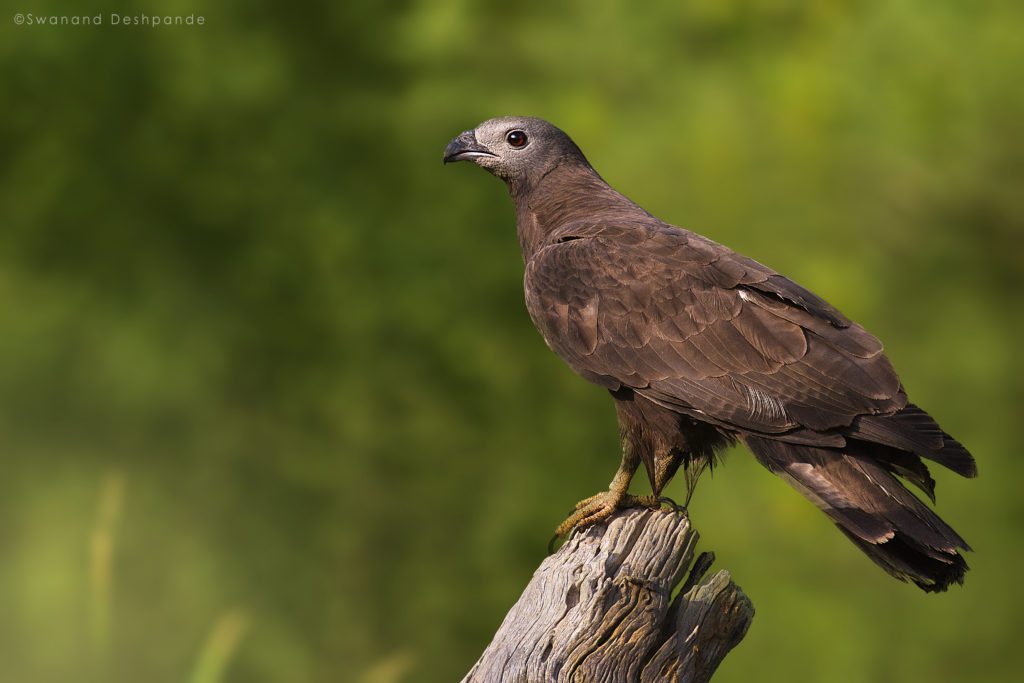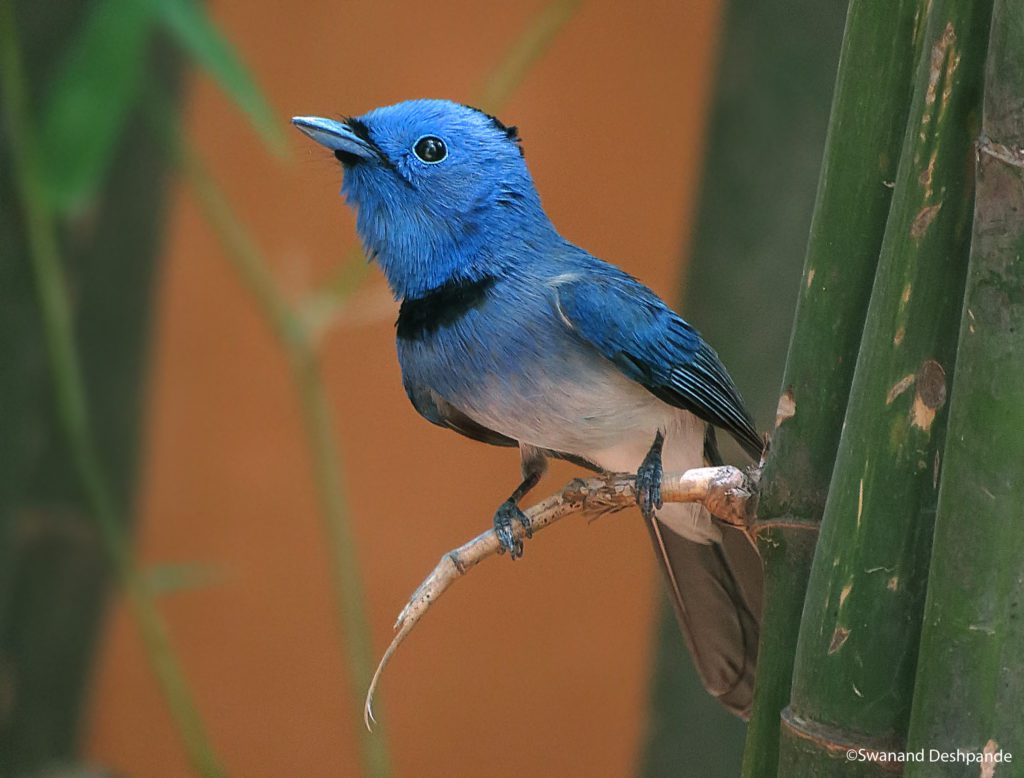Baya Weaver Birds- A Master Weaver in Decline
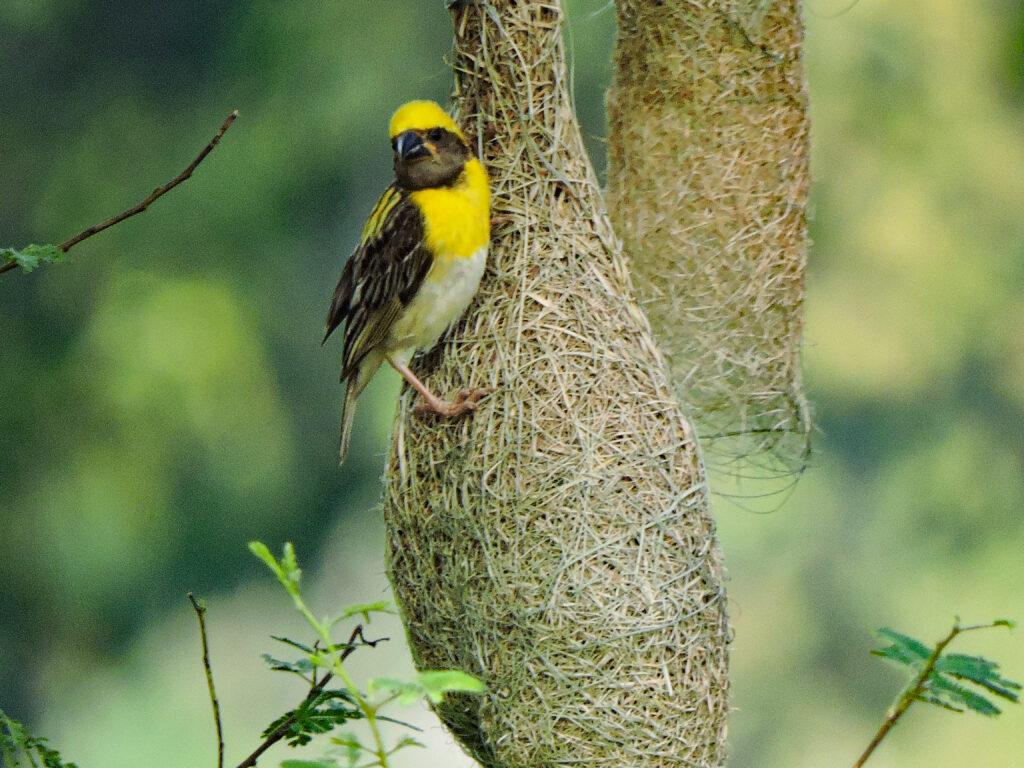
The Baya Weaver Birds (Ploceus philippinus) are small, sparrow-sized birds renowned for its extraordinary nest-building abilities. This species, found mainly in South Asia, is sexually dimorphic. It means that both males and females differ in appearance, with males boasting bright yellow plumage during the breeding season.
These birds are commonly found in rural areas, especially near wetlands, grasslands, or even in human-altered landscapes like farmlands. What sets the Baya Weaver bird apart from other birds is its intricate, hanging nest woven from grass and leaves—a true marvel of avian engineering.
Why are the Baya Weaver Birds Special?
The Baya Weaver Bird’s claim to fame is its ability to construct an elaborate, hanging nest that swings from trees or other high structures, often over water. The male Baya Weaver takes the lead in building the nest, using grasses, leaves, and twigs to create a secure home. The entrance to the nest is designed with a long tunnel that points downward, offering protection from predators like snakes and birds of prey.
One of the most fascinating behaviours of these birds is that the female chooses her mate based on the quality of his nest. Males start the nest, but only when a female inspects and approves it does he complete the construction by adding the tunnel entrance. If the female deems the nest unworthy, she moves on, leaving the male to either improve his nest or start over. If chosen by a female, she does the interior finishes before egg laying, making them perfect interior designers.
Also Read: Indian Vulture Species
Once Abundant, Now in Decline
Once a common sight in the Indian countryside, Baya Weaver Birds were found in large colonies much like sparrows. However, their numbers have dwindled due to habitat destruction, pesticide use, and the rapid changes in rural landscapes. The grasses and materials they rely on for nest-building are becoming scarce and their habitats such as wetlands and farmlands are being destroyed or polluted. As a result, their distribution has become fragmented and spotting these birds in the wild has become increasingly rare.
Today, Baya Weaver Birds have adapted to modern life by building their nests in unconventional places such as on electric wires, poles, and concrete structures. This adaptability highlights the resilience of the species but also underscores the pressures they face in the Anthropocene, where human activities increasingly dominate the planet.
The Importance of Nesting Colonies
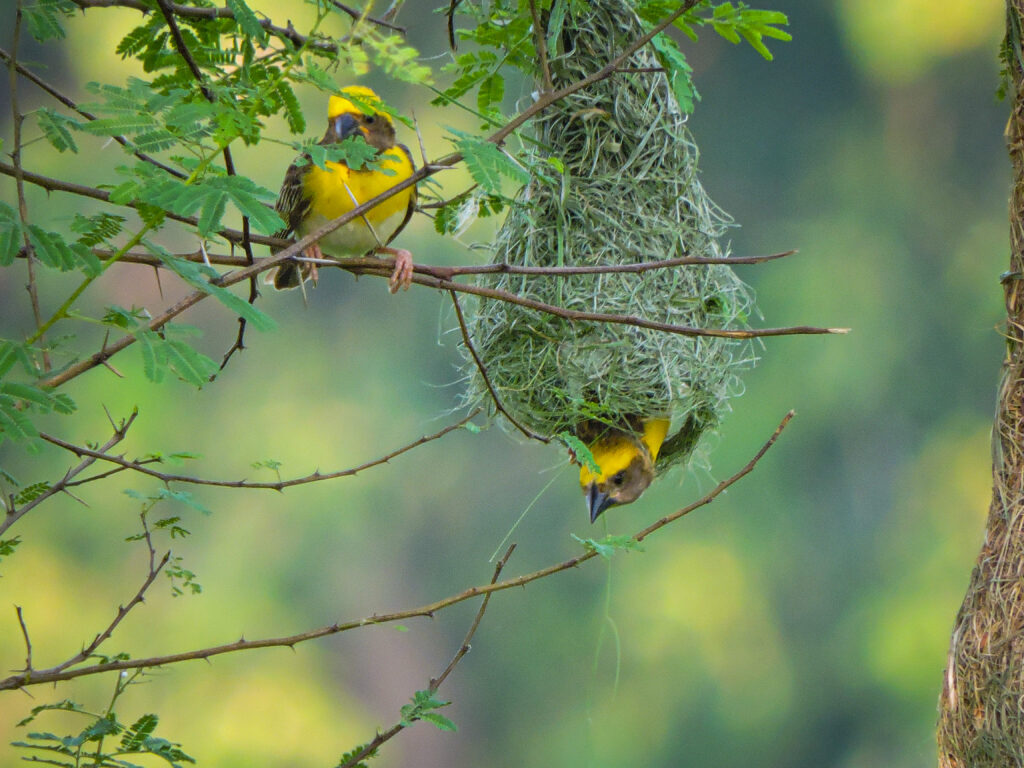
Baya Weaver Birds are colonial breeders, meaning they often build nests close together in clusters. This behaviour offers some protection against predators but also heightens competition for mates. Once the breeding season ends, their old nests, no longer useful to the weavers, become shelters for smaller bird species such as munias and silverbills. Despite their apparent resilience, the Baya Weaver bird’s reliance on specific habitats and materials makes them vulnerable to environmental changes.
Conservation Efforts for Baya Weaver Birds: A Race Against Time
The decline in Baya Weaver Birds populations echoes the declines seen in other iconic species, such as vultures and sparrows. Efforts to conserve this species are underway. Organizations like the Bombay Natural History Society (BNHS) and Salim Ali Centre for Ornithology and Natural History (SACON) have launched initiatives to track their nesting sites.
The online portal of the BNHS to report nesting sites of birds, including the Baya Weaver, is called Citizen science.in. This platform allows individuals to contribute to bird conservation by reporting bird sightings, nesting locations, and other relevant data, helping researchers and conservationists track bird populations and their habitats across India.
One can report bird nesting sites, including those of the Baya Weaver, to the BNHS through their dedicated email: [email protected]
This email is linked to their Indian Bird Conservation Network (IBCN) and can be used for reporting sightings and other bird-related data.
Also Read: Parakeet Species in India
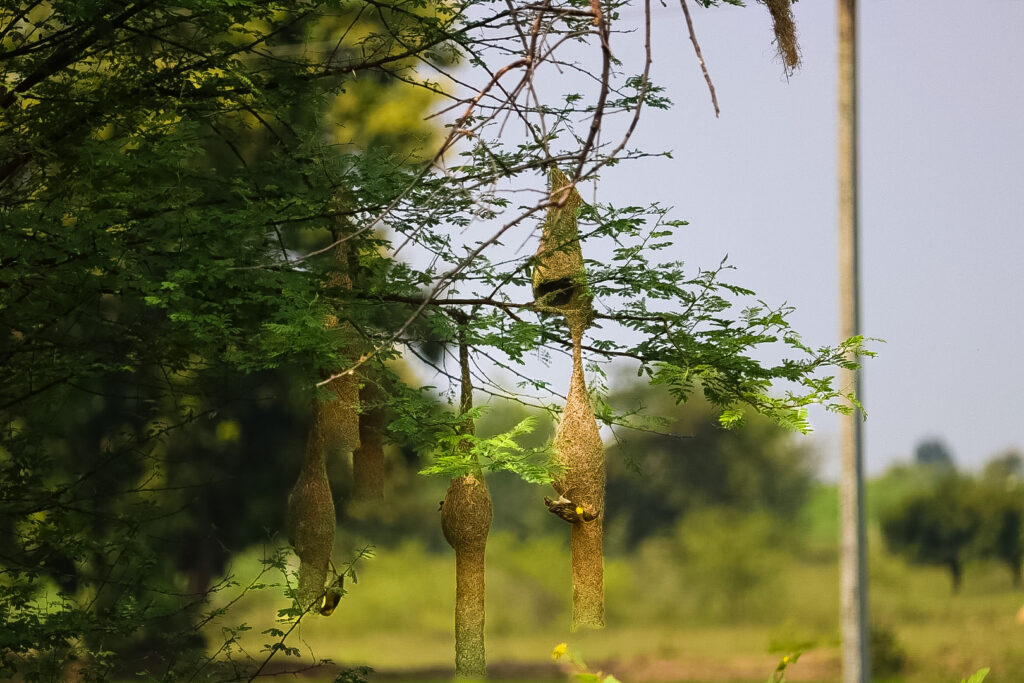
At Waghoba Eco Lodge (Tadoba Andheri Tiger Reserve) we are fortunate to witness a small nesting site of Baya Weaver Birds inside our campus. This could be one of many undocumented colonies in the area and would be invaluable to collect and report data on these nesting locations to aid in their conservation. Every piece of information can contribute to understanding their population trends and developing effective conservation strategies.
This morning, on 13th September 2024, I had the privilege of observing the nest-building and courtship behaviour of the Baya Weaver Birds for over an hour. It was a mesmerizing experience, one that brought back memories of my last sighting of these birds in 2014, in Naliya Taluka of Kutch district, Gujarat.
However, as I watched these marvellous birds weaving their intricate nests, my joy was interrupted by the unsettling sight of farmers spraying pesticides in the fields just outside our lodge. The stark contrast between witnessing nature’s beauty and the impact of human activities left me deeply disturbed. What should have been a moment of happiness became a reminder of the challenges these birds face in today’s world.
For visitors staying at our resort in Tadoba, these glimpses of wildlife, including the Baya Weaver birds, provide a rare connection to nature, deepening their appreciation of the delicate ecosystems around us. It’s crucial that these natural habitats are protected so future generations can enjoy such sightings.
Also Read: Top Birds in Satpura
The urgent need for action
Baya Weaver Birds are an essential part of the ecosystem, and their decline could have ripple effects on other species. One of the main threats they face is habitat degradation, partly due to pesticide runoff polluting water bodies and diminishing the availability of the grass species they use for nest-building and foraging which is now compromised. The situation mirrors the challenges faced by many bird species across India, where urbanization and agriculture often take precedence over conservation.
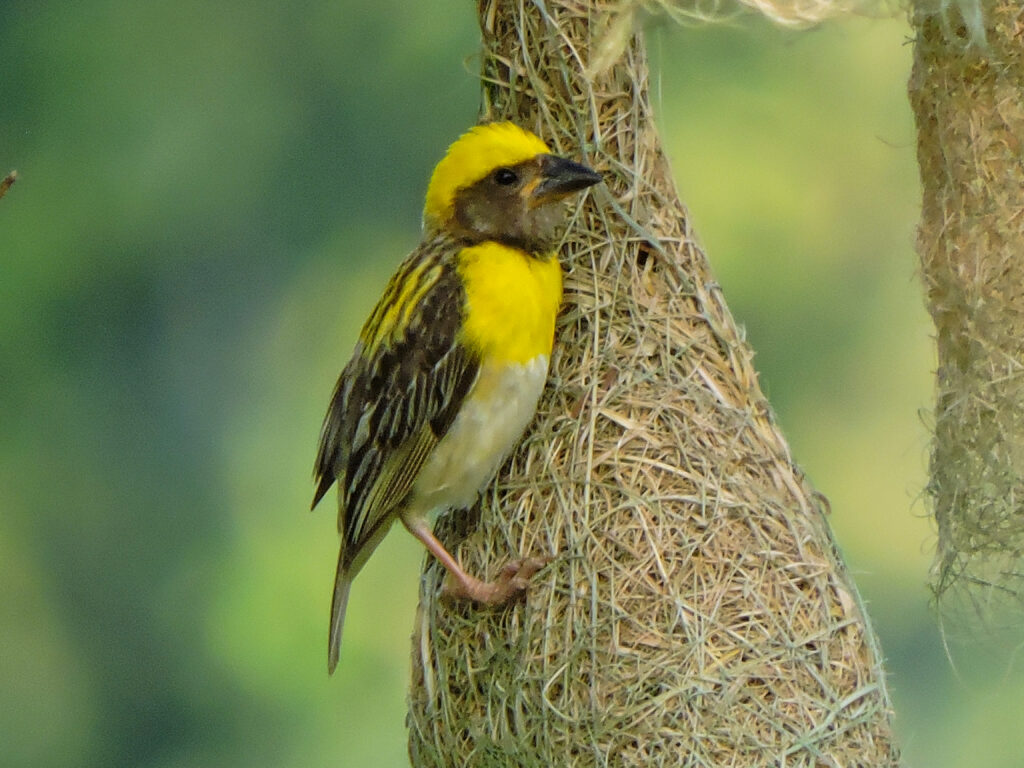
Furthermore, climate change poses a significant threat to the Baya Weaver Birds. As weather patterns shift, the timing of rains and the availability of grasses for nest-building are becoming less predictable. The combined effects of habitat destruction, changing agricultural practices, and the impact of climate change has made these birds more vulnerable.
If we fail to act now, the Baya Weaver Birds could disappear from many of its former strongholds. Reporting nesting sites, reducing pesticide use, and preserving wetlands and grasslands are crucial steps toward ensuring the survival of this remarkable bird.
A Call to Protect Our Natural Heritage
The Baya Weaver Bird’s story is one of ingenuity and adaptation, but it is also a cautionary tale about the fragility of nature in the face of human impact. Just as we are working to save floricans, bustards, vultures and sparrows. We must now turn our attention to the Baya Weaver as well, their nests may be emptying, but with concerted conservation efforts, we can ensure that these master weavers continue to grace our landscapes for generations to come.
Let us do our part by observing and reporting nesting sites, and by spreading awareness about the importance of conserving these unique birds. Together, we can make a difference in securing a future for the Baya Weaver.
Also Read: Birds Of Kanha National Park
Further readings
1. Kumar, A. (2004). Breeding and Nesting Behavior of the Baya Weaver (Ploceus philippinus) in South Asia. Journal of Ornithology, 145(1), 45-57.
2. Sundar, K. S. G., & Kittur, S. (2013). Population Decline of Grassland Birds in India: The Role of Agricultural Intensification. Biological Conservation, 167, 43-50.
3. Ali, S. (2012). The Book of Indian Birds (13th Ed). Oxford University Press.
4. Rahmani, A. R. (2012). Threats to Indian Avifauna Due to Pesticide Use: A Review. Environmental Impact Assessment Review, 32(2), 65-72.
5. Jha, C. S., Goparaju, L., & Tripathi, N. (2016). Impact of Climate Change on Wetland Birds in India: A Case Study of Baya Weaver. Climate Research, 69(1), 109-119.
6. Ramesh, A. (2019). The Incredible Weavers of the Wild: How Baya Weavers Craft Their Nests. Mongabay India.
7. Awasthi, P. (2020). The Decline of India’s Grassland Birds: The Baya Weaver and Other Victims. The Hindu.
8. Jha, N. (2021). Baya Weavers: The Architects of the Bird World. Nature inFocus.
9. Bhattacharya, S. (2022). Saving the Sparrows: How Urbanization and Pesticides Are Impacting Small Birds Like the Baya Weaver. Down to Earth.
10. Shah, T. (2023). India’s Beautiful Weavers and Their Struggles to Survive in a Changing World. Scroll.in.
Written by Shashank Arya, Naturalist at Pugdundee Safaris

